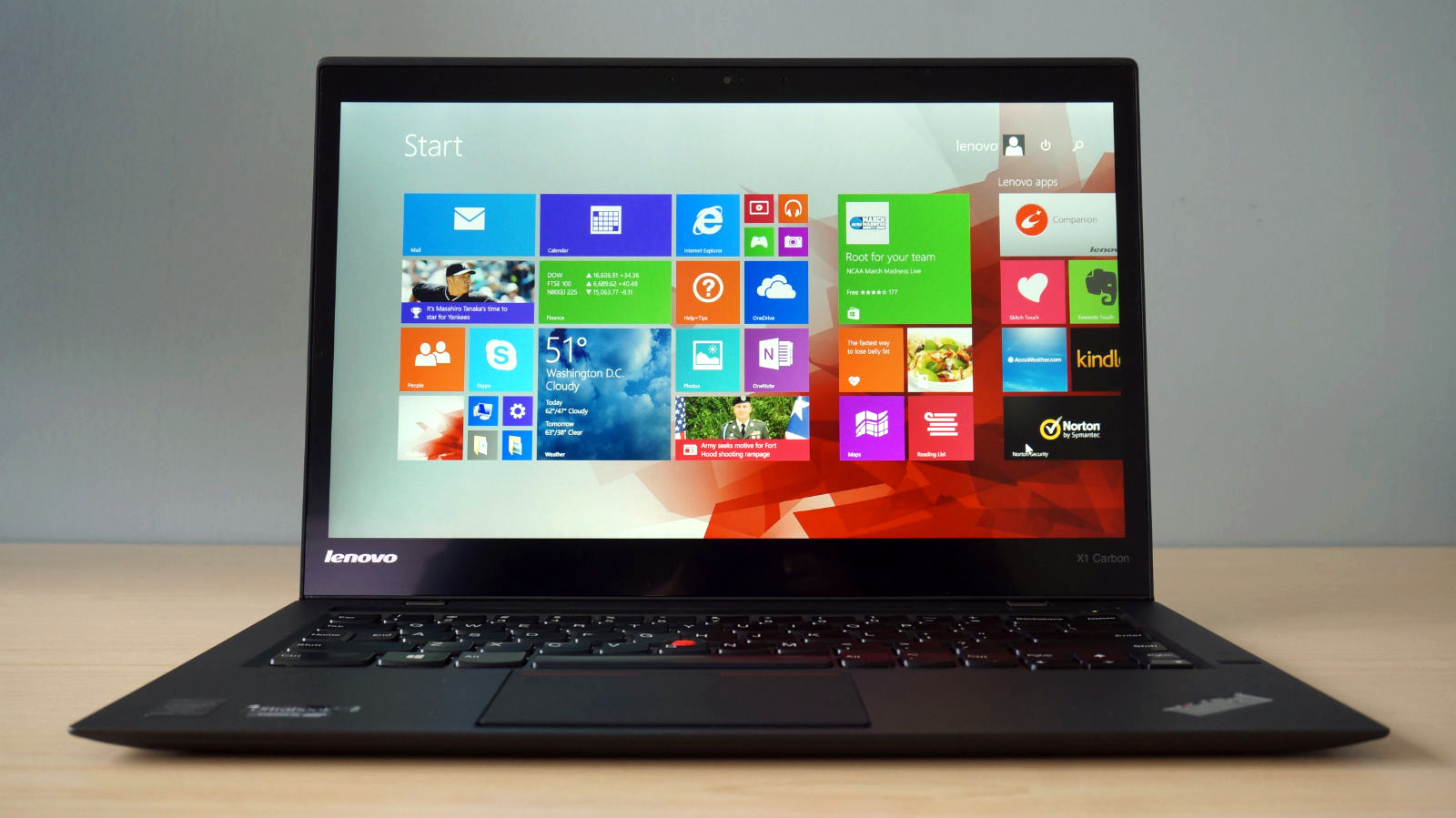Why you can trust TechRadar
Most of the systems I've tested at TechRadar have come packing the immensely popular Core i5-4200U chip with integrated graphics and no less than 4GB of RAM. So, I was surprised to see little difference between that CPU and the ThinkPad X1 Carbon's slightly beefier Core i5-4300U processor, at least in benchmarks:
- 3DMark: Ice Storm: 36,988; Cloud Gate: 4,201; Fire Strike 568
- Cinebench Graphics: 23.12 FPS; CPU: 239 points
- PCMark 8 Battery Life: 2 hours, 55 minutes
What's more surprising is that the X1 managed almost exactly the same battery life as most Core i5-4200U systems on the synthetic test. So, perhaps it's slightly faster, if not any longer lasting. My anecdotal testing echoed this result.
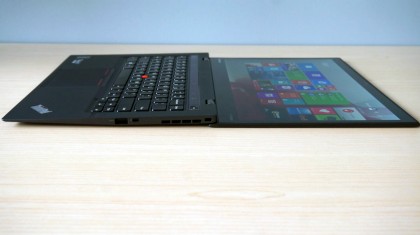
With the power setting kept to "Balanced", the screen at maximum brightness (it's rather dim, but more on that later), the volume set to 30% and keyboard backlighting off, the X1 held out for 4 hours and 54 minutes before shutting off. That was while running over 10 tabs in Google Chrome, HipChat, a PDF reader, Spotify streaming high bitrate audio and the occasional HD video on YouTube. Lenovo promises up to 9 hours of endurance.
Of course, halving the screen brightness would earn you some extra lasting power, but at the cost of legibility. And if you're churning complex functions through Excel, you shouldn't set the power any lower. That said, even at max brightness, the X1 managed to outlast the HP ZBook 14's 4 hours and 18 minutes.
Remixing the classic ThinkPad inputs
Lenovo rarely disappoints when it comes to typing and tracking, but this ThinkPad throws a few curveballs. The iconic ThinkPad keyboard remains untouched in terms of travel and spacing, offering the quality typing and tracking you've come to expect. (And yes, the TrackPoint is still here.)

However, the vendor changed quite a bit about the key layout. Namely, the Home and End keys now sit where otherwise a Caps Lock key would, snugly occupying the same space. The same goes for the Backspace and Delete keys, which are crammed into a single space normally home to a single Backspace key.
To activate Caps Lock, you must now double-tap the left Shift key. Adjustments like this were necessary to make room for the adaptive keys. This replaces the Function keys on the uppermost row with a new interface, but also cuts the Function key on the lowest row – hence many of these changes. Frankly, it might take you a few full days of use to adapt, like it did for me.
Adapting to the new Function Row
In testing the ThinkPad X1 Carbon, I found a dual meaning in the name for its new Adaptive Function Row. For one, this row of touch-sensitive keys adapts its functions to the tasks at hand. But at the same time, it takes quite a bit of learning and use to adapt to this ever-changing row of keys.
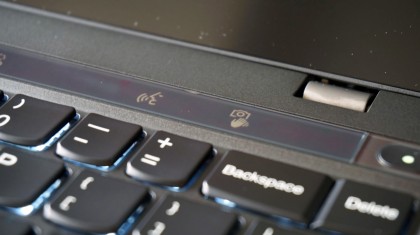
Switching between certain apps activates different functions on the row of keys. For instance, activating a web browser causes the row to instantly change from its current state to a series of web-focused functions, like refresh, page navigation and more. Switching to, say, Skype unveils a whole new host of focused functions, like mic gain, webcam controls, conference calling and more.
Opening any Microsoft Office application will activate the standard Function row along with keyboard backlight control and a few other specific functions. Essentially, this row of keys can be relevant to the three major laptop use cases: web browsing, video chat and document editing and creation.
Because the keys have no physical feedback, I often found myself accidentally pressing the Function key (which manually cycles between the function rows) when trying to press "Esc". At least the keys are easily visible under all sorts of light. Regardless, the utility here is clear: merging the media-first keys of competitors like the MacBook Pro 13-inch with Retina display with the Function keys that business users need.
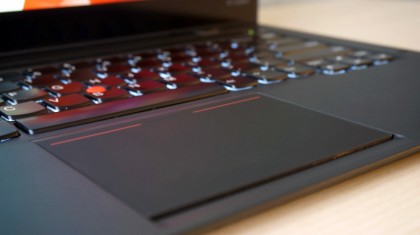
A sharp, but dim, screen
With a super sharp resolution at 2560 x 1440 pixels, images and videos pop on this touch panel. But what good are all those pixels if their blown out by glare? Unfortunately, the X1's screen is terribly dim, producing far too much glare in daylight even on overcast days.
Plus, I've still yet to find much use for touchscreens on laptops in a business environment. Sure, you can lay the X1 flat and flip the screen's content 180 degrees with a special adaptive key. But couldn't you just turn the device around to show off that content?
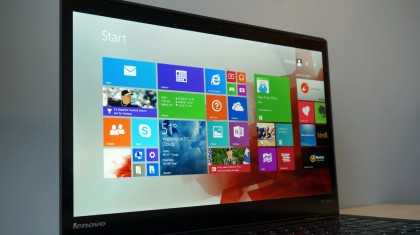
Besides, the utility of a QHD screen will be lost on the general business user that doesn't use programs like Photoshop. Touch controls are snappy on this screen, but how often will you make use of that feature in your everyday work?
Lenovo might have been better off focusing on a brighter, cheaper FHD panel without touch control. Your only other option is a 1600 x 900 panel with neither touch input nor IPS technology.
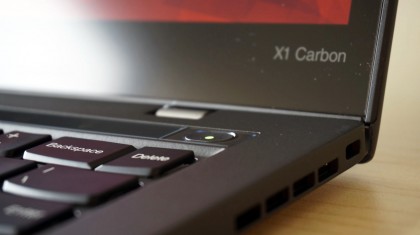
Bundled software
In a surprising move, Lenovo included quite a bit of proprietary software in each X1. Some are more innocuous, like Lenovo Web Start (a self-contained browser with Lenovo's custom web page), Lenovo Settings and Lenovo Support. Others are more notable, like those below:
- Adaptive Keyboard Settings: This app controls all of the particulars regarding the X1 Adaptive Function Row, camera gestures, voice recognition.
- Lenovo Companion: This Modern UI app acts as a hub for most of Lenovo's custom apps and a guide for users that are new to Windows 8.1.
- Lenovo QuickCast: The X1 can share files with other mobile devices on the same Wi-Fi network with this tool. Yet, it requires said device to have the app, which is not yet available on iOS.
- Nitro Pro 8: Lenovo includes this PDF reader app on all of its professional-grade systems. It's essentially a free, pro-level alternative to Adobe Acrobat Reader.
Joe Osborne is the Senior Technology Editor at Insider Inc. His role is to leads the technology coverage team for the Business Insider Shopping team, facilitating expert reviews, comprehensive buying guides, snap deals news and more. Previously, Joe was TechRadar's US computing editor, leading reviews of everything from gaming PCs to internal components and accessories. In his spare time, Joe is a renowned Dungeons and Dragons dungeon master – and arguably the nicest man in tech.
